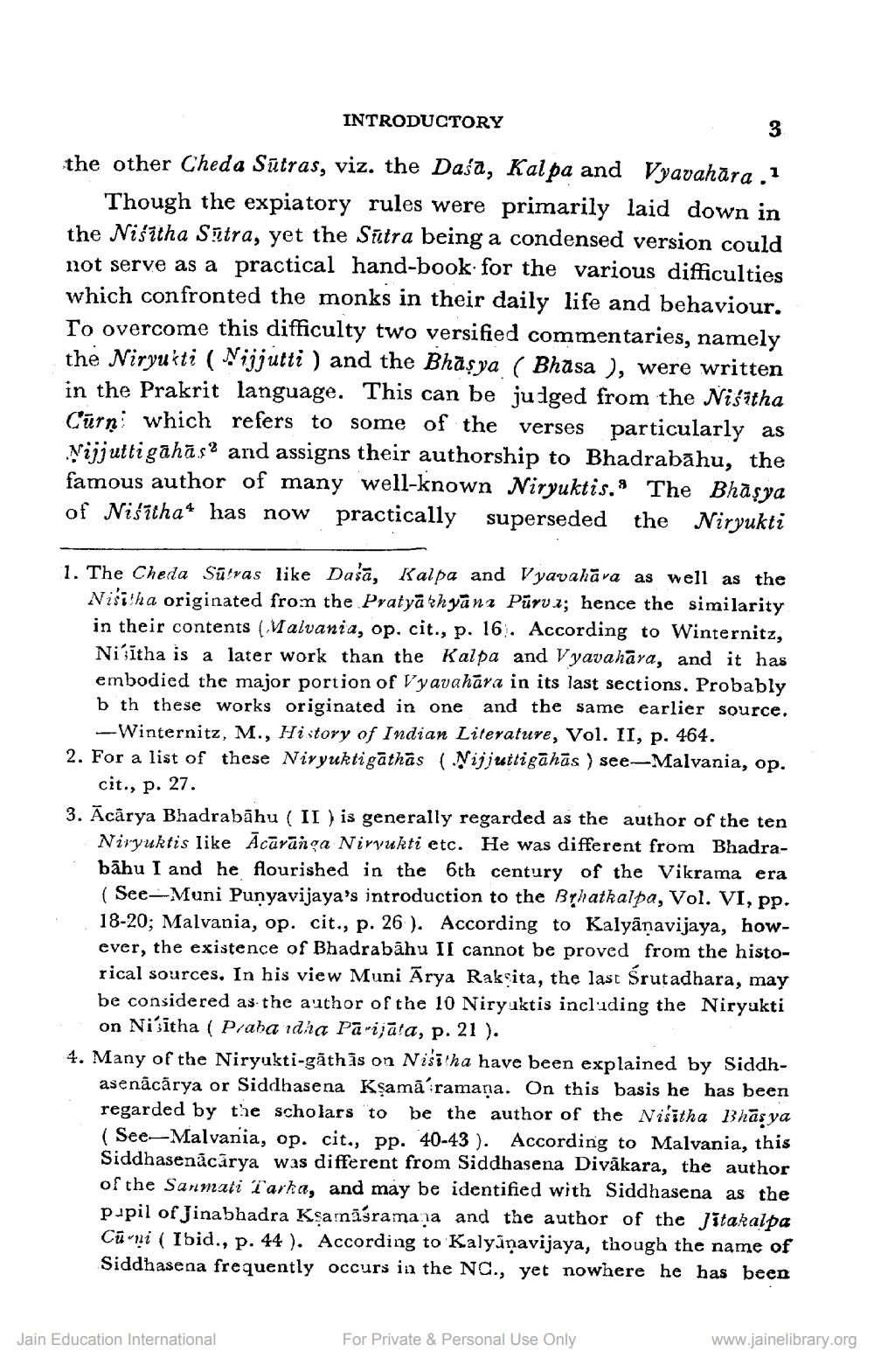________________
3
INTRODUCTORY the other Cheda Sūtras, viz. the Daša, Kalpa and Vyavahāra . 1
Though the expiatory rules were primarily laid down in the Nišitha Sutra, yet the Sitra being a condensed version could not serve as a practical hand-book for the various difficulties which confronted the monks in their daily life and behaviour. To overcome this difficulty two versified commentaries, namely the Niryukti ( Nijjutti ) and the Bhāşya ( Bhasa ), were written in the Prakrit language. This can be judged from the Nišitha Cürn which refers to some of the verses particularly as Nijjutti gahās? and assigns their authorship to Bhadrabahu, the famous author of many well-known Niryuktis,: The Bhāşya of Nišithat has now practically superseded the Niryukti
1. The Cheda Sūtras like Dašā, Kalpa and Vyavahāra as well as the Nišitha originated from the Pratya thyāna Purva; hence the similarity in their contents (Malvania, op. cit., p. 16. According to Winternitz, Ni'itha is a later work than the Kalpa and V yavahāra, and it has embodied the major portion of Vyavahāra in its last sections. Probably b th these works originated in one and the same earlier source.
-Winternitz, M., History of Indian Literature, Vol. II, p. 464. 2. For a list of these Niryuktigāthās (Nijjuitigāhās ) see-Malvania, op.
cit., p. 27. 3. Ācārya Bhadrabāhu ( II ) is generally regarded as the author of the ten
Niryuktis like Acaranga Niryukti etc. He was different from Bhadrabāhu I and he flourished in the 6th century of the Vikrama era (See-Muni Punyavijaya's introduction to the Brhatkalpa, Vol. VI, pp. 18-20; Malvania, op. cit., p. 26). According to Kalyānavijaya, however, the existence of Bhadrabāhu II cannot be proved from the historical sources. In his view Muni Ārya Rakita, the last Srutadhara, may be considered as the author of the 10 Niryuktis including the Niryukti
on Nistha ( P/aba dha Parijata, p. 21). 4. Many of the Niryukti-gāthīs on Nišitha have been explained by Siddh
asenācārya or Siddhasena Kşamā'ramana. On this basis he has been regarded by the scholars to be the author of the Nistha Bhāsya (See-Malvania, op. cit., pp. 40-43 ). According to Malvania, this Siddhasenācārya was different from Siddhasena Divākara, the author of the Sanmati Tarka, and may be identified with Siddhasena as the pupil of Jinabhadra Ksarnāsramana and the author of the Jitakalpa Cūvni ( Ibid., p. 44 ). According to Kalyanavijaya, though the name of Siddhasena frequently occurs in the NC., yet nowhere he has been
I
Jain Education International
For Private & Personal Use Only
www.jainelibrary.org




